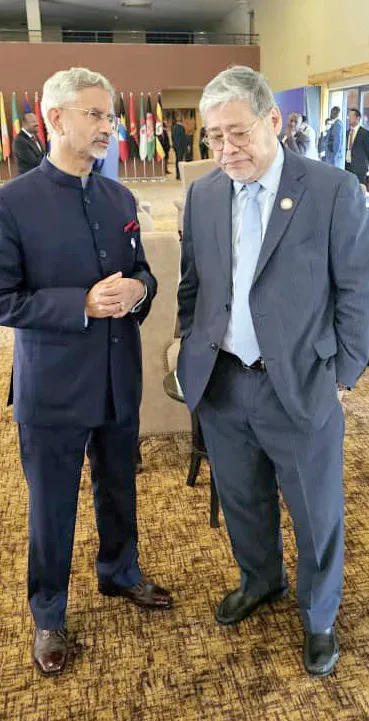As in the case of the previous two Non-alignment Movement (NAM) summits held during his period in office, Prime Minister Narendra Modi did not attend the latest one held in Kampala recently. While Modi asked the Vice-Presidents of India to lead the Indian delegation to the two earlier summits in Caracas (2016) and Baku (2019) he sent External Affairs Minister (EAM) S Jaishankar to represent India at the Kampala summit. India’s Vice-Presidents are above the Prime Minister in terms of official protocol. Hence, if they lead Indian delegations, Indian diplomats can stress that the Prime Minister’s absence does not connote that India is not attaching sufficient importance to NAM. This is not possible if a minister, even if it is EAM, who leads the delegation.
The fact is that many diplomats and analysts in India consider NAM as a relic of the past, irrelevant to this country’s present interests. This is in addition to the scepticism about NAM which has continued since the end of the Cold War. It was held by many international relations scholars in India that the purpose of NAM was to enable the recently decolonized and developing countries to maintain their sovereignty as the world got divided, after the Second World War, into a capitalist bloc of countries led by the United States and a communist/socialist bloc headed by the Soviet Union.
Both these blocs were engaged in great ideological, political, diplomatic and military competition. Both sought to embrace the newly independent countries. At such a time leaders like Jawaharlal Nehru, Gamal Abdel Nasser of Egypt, Josip Broz Tito of Yugoslavia, Sukarno of Indonesia and Kwame Nkrumah of Ghana decided that a movement was needed to help these like-minded countries to sustain their autonomy of action not only on international issues but also on their domestic developmental choices. The first NAM summit was held in September 1961, at the height of the Cold War. That was also a time when the two blocs were furiously developing weapons of mass destruction and there were genuine fears that their arms race would lead the world to disaster. Thus, one of the objectives of NAM was to be a voice of sanity urging the two blocs to consider the consequences of their nuclear policies and actions for the international community. Clearly, NAM was not able to influence the nuclear ‘haves’ compelling countries like India to go in for strategic programmes to ensure their own security interests.
NAM became an anchor of Indian policy after 1961 and continued to be so through the decades of the sixties and the seventies and till the middle of the 1980s. Indeed, India held a NAM summit in 1983 at a time of great difficulty for the Movement because of the Iran-Iraq war. However, with the collapse of the Soviet Union in 1991 the world decisively changed direction. The ideological charm of communism was negatively impacted. India too began to give up its socialistic socio-economic development policies from 1991. It had to re-orient its external engagements too. Hence, many diplomatic analysts questioned the relevance of NAM for India.
At this stage India and many other countries argued that NAM’s quest for developing countries’ autonomy of action and equity and justice in a world where disparities were rising because of new technologies did not go away with the disappearance of the Soviet bloc. It was therefore vital for NAM to continue to give voice to the aspirations of developing countries. This was a valid argument in favour of the continuance of NAM. In the subsequent decades though some NAM countries, in some respects, outgrew the Movement. India was in such a category. As it developed after the liberalization of the economy in 1991 it simultaneously became both a part of what this writer calls the management of the world and of its ‘trade unions’. This was not an easy position to be in but it captures India’s current position too.
Indian policy is seeking to project that while India is becoming a part of the norms and rules setting group of countries it remains mindful that it is, in many respects, part of the developing world and it is therefore championing the interests of developing countries. It is this approach that led it to successfully promote the inclusion of the African Union as a member of the G20 during its presidency of the group last year. And, it is this general approach that undergirds EAM’s well-crafted statement at the Kampala summit.
Jaishankar rightly reminded NAM of the profound changes that have come about because of the covid pandemic. He rightly focused on the negative impact of conflicts like in Ukraine and Gaza on the interests of developing countries. He dwelt on the problems of supply chains and the need to bring about changes in the United Nations. He also spoke of the need to take advantages of digitization for an improvement in public services. There is no doubt that India has done well in this area especially in the past ten years.
If there was anything missing in his address it was the vision that animated a leader like Jawaharlal Nehru. For Nehru, the developing world could not close the gap with the advanced world unless it caught up with it in scientific knowledge and technology. The sad fact is that in the past four decades as digitization has spread the gap in these crucial knowledge areas between the advanced and developing world has grown. That does not augur well for NAM or the developing world’s future.







